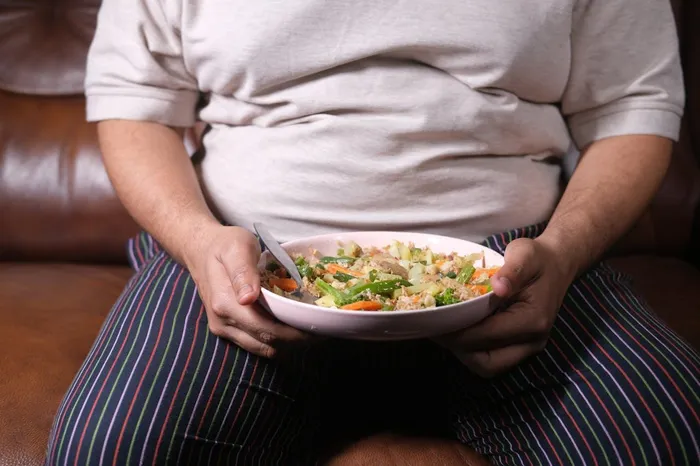Unseen danger: understanding the health risks of visceral fat and how to combat it

Discover the dangers of visceral fat, the hidden health risk that can lead to serious diseases.
Image: Towfiqu barbhuiya /pexels
When it comes to weight, we often focus on what we see in the mirror, pinching an inch of fat or struggling to fit into our favourite jeans.
But what if I told you the most dangerous fat in your body isn’t visible?
This hidden health risk is called visceral fat, and it’s silently wreaking havoc on millions of people worldwide.
Let’s break it down: what is visceral fat, why is it so harmful, how do we accumulate it, and most importantly, how can we fight back?
Visceral fat is the deep, internal fat that wraps around your vital organs, including your liver, pancreas, and intestines.
Unlike subcutaneous fat, which sits just under the skin and is easier to see, visceral fat is buried within your abdominal cavity. Think of it as the dangerous “invisible enemy” most of us don’t even realise we have.
While a certain amount of visceral fat is normal and even essential for cushioning your organs, too much of it can act like a ticking time bomb inside your body.
The hidden health risks of visceral fat
The harm caused by visceral fat isn’t just skin-deep; it runs far deeper. According to the World Health Organization (WHO), non-communicable diseases (NCDs) such as heart disease, diabetes, and certain cancers are among the leading causes of death globally, and visceral fat plays a major role in these illnesses.

A 2023 study published in the National Institutes of Health (NIH) found that individuals with high levels of visceral fat have a 2-3 3-times higher risk of developing cardiovascular disease than those with lower amounts
Image: Kaboompics.com/pexels
This fat is biologically active, releasing hormones and inflammatory markers like TNF-alpha and IL-6, which can damage your arteries, disrupt your metabolism and increase your risk of:
- Type 2 diabetes: Visceral fat makes your body resistant to insulin, causing chronically high blood sugar levels.
- Heart disease and stroke: The inflammatory compounds it releases can lead to hardened arteries and increased blood pressure.
- Fatty liver disease: Excess fat stored in the liver impairs its ability to function.
- Certain cancers: Chronic inflammation from visceral fat has been linked to cancers of the colon, breast, and pancreas.
A 2023 study published in the National Institutes of Health (NIH) found that individuals with high levels of visceral fat have a 2-3 3-times higher risk of developing cardiovascular disease than those with lower amounts.
You might be wondering, “How did I end up with this dangerous fat?” The answer lies in everyday habits that many of us are guilty of:
1. Excessive sugar intake: Dr Pradip Jamnadas, an interventional cardiologist, explained on The Diary of a CEO podcast that constant sugar consumption spikes insulin levels, promoting the storage of visceral fat.
Foods like sodas, pastries and even “healthy” snacks like granola bars can be culprits.
2. Sedentary lifestyle: Sitting for long hours, whether at work or in front of the TV, slows your metabolism and encourages fat to accumulate around your organs.
3. Chronic stress: High stress levels lead to elevated cortisol, a hormone that directs your body to store fat in the abdominal area.
4. Poor sleep: A lack of quality sleep disrupts hormones like leptin and ghrelin, increasing hunger and fat storage.
How to burn visceral fat and boost your health
With the right strategies, you can reduce it and improve your overall health.
1. Intermittent fasting
Jamnadas emphasises fasting as one of the most effective ways to target visceral fat. When you fast, your insulin levels drop, allowing your body to burn stored fat for energy instead of relying on food.
A 2022 NIH study comparing intermittent fasting to traditional calorie restriction found that the fasting group reduced visceral fat by 33%, compared to only 14% in the calorie-restriction group.
Here’s how fasting works:
- During the first 12 hours, your body burns stored glycogen (sugar) for energy.
- After that, it begins breaking down fat, starting with visceral fat to fuel your body.
Unlike dieting, fasting doesn’t slow your metabolism or cause muscle loss. Instead, it helps lower inflammation and improve insulin sensitivity.
2. Cut down on sugar and processed foods
Replace sugary drinks and processed snacks with whole, nutrient-dense foods like:
- Leafy greens (spinach, kale)
- Lean proteins (chicken, fish, tofu)
- Healthy fats (avocados, nuts, olive oil)
3. Move your body
Physical activity is non-negotiable in the fight against visceral fat. Aim for at least 30 minutes of moderate exercise, 5 times a week. Activities like brisk walking, cycling, or strength training can help melt away this stubborn fat.
4. Prioritise sleep
Sleep isn’t just for beauty; it’s essential for your body’s ability to regulate fat storage. Adults should aim for 7-9 hours of quality sleep each night.
5. Manage stress
Chronic stress not only adds to your mental load but also increases visceral fat. Incorporate stress-relief practices like yoga, meditation, or even a 10-minute daily walk in nature.
Visceral fat isn’t just a cosmetic issue; it’s a silent killer. It operates behind the scenes, increasing your risk of life-threatening diseases, often without obvious symptoms.